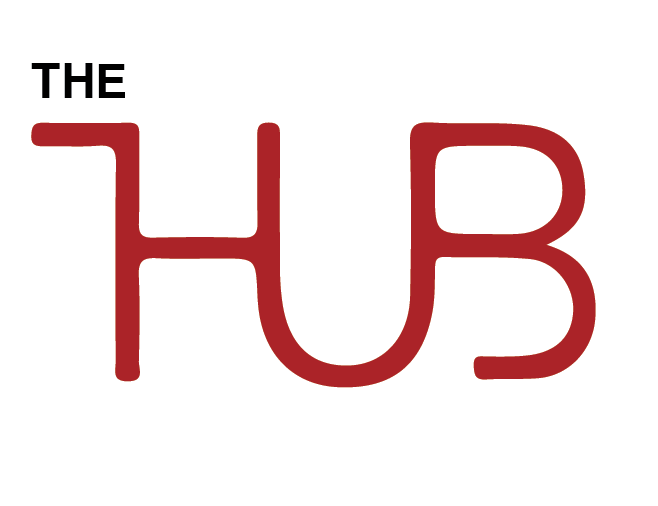
Case Study #2 Connectivity Suite for Quadriplegic Users
During my bachelors degree at Arizona State University (ASU) I conducted a capstone project as part of the Innovation Space Capstone Program. Innovation Space at ASU is an entrepreneurial joint venture among the Herberger Institute for Design and the Arts, Ira A. Fulton Schools of Engineering and W.P. Carey School of Business. The transdisciplinary education model and research lab sought to develop products with market value while serving real societal needs and minimizing environmental impact. I was on a team of students from graphic design, business, engineering and industrial design, tasked to meet the design needs for the Center for Ubiquitous Computing (CUbiC), a research group that focuses on the development of assistive technology for a full spectrum of ability.
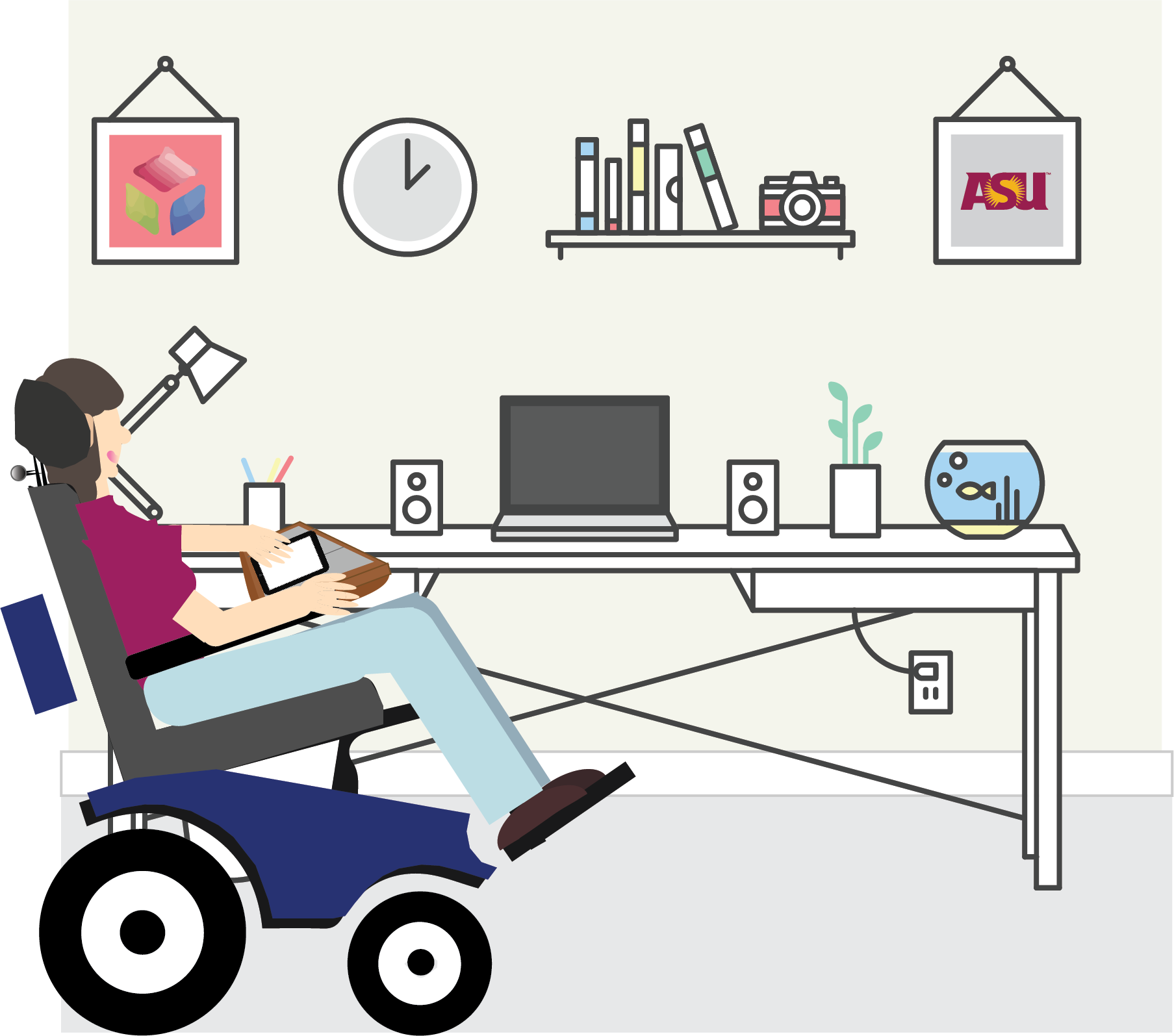
The Challenge
The Center for Ubiquitous Computing with research support from the Paralyzed Veterans of America (PVA) approached my capstone team with a challenge. To design assistive devices for power wheelchair users.
The focus for the project was to understand the needs of adults in wheelchairs and develop new products that can make everyday life and ordinary tasks more convenient through user-friendly and intuitive design. We were tasked with developing solutions that are “beyond accessibility”. Most products designed for individuals with disability focus solely on access rather than enhancing the quality of life,therefore it is critical that these products offer not only accessibility but go further in bringing delight, comfort and joy to the user. My group decided to focus on the need for users of power-wheelchairs with limited dexterity who wanted their devices to allow them to live more productive lives.
The Approach
Transdisiplinary Design: The innovation space capstone program combines teams of students from Industrial Design, Engineering; Visual Communication Design and Business to work through the following four questions:
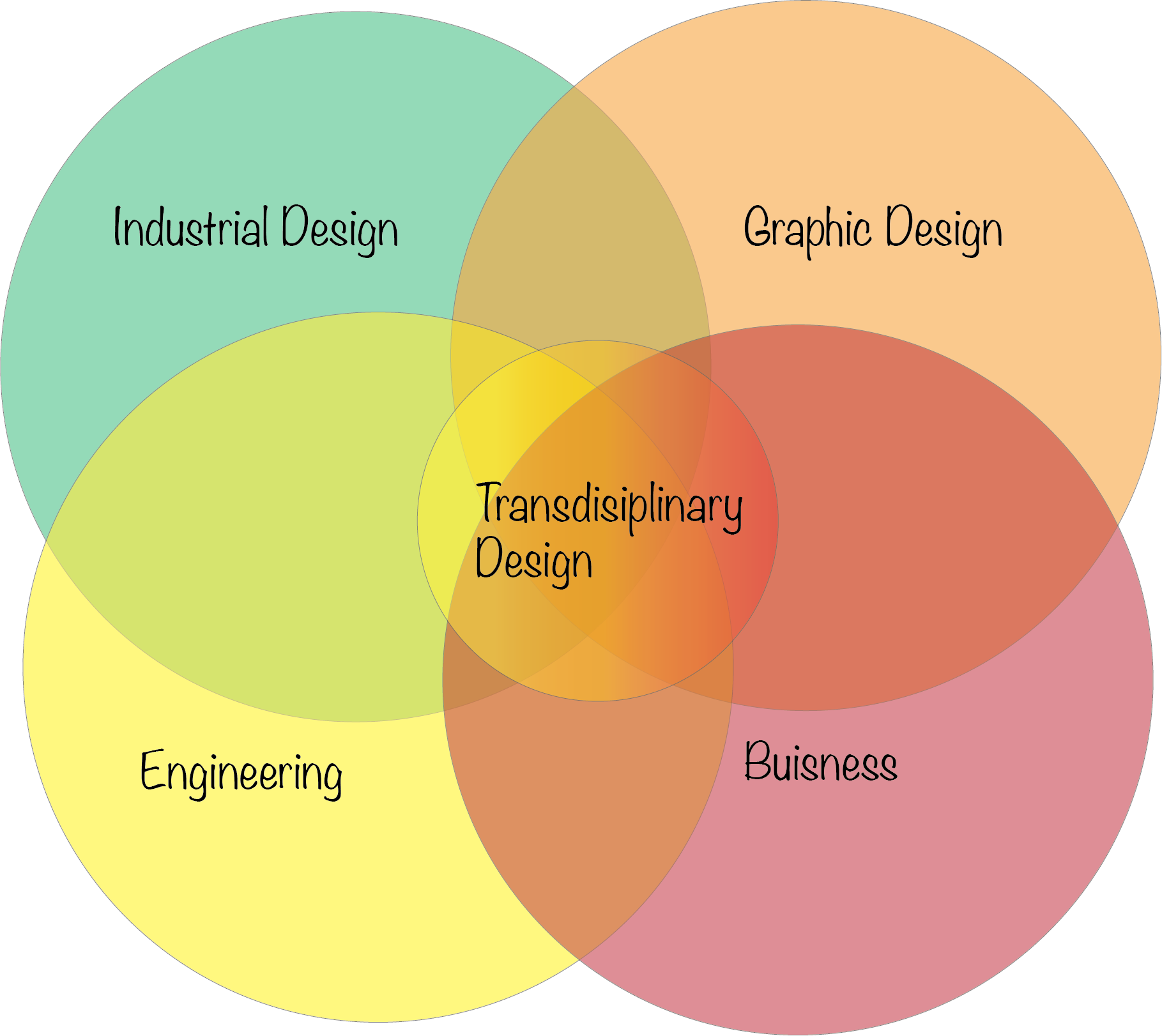
What is valuable to users?
What is possible through engineering?
What is desirable to business?
What is good for society and the environment?
Using the Integrated Innovation model, students aim to create products that
satisfy user needs and desires;
apply innovative but proven engineering standards;
create measurable value for business.
benefit society while minimizing impacts on the environment.
The Team

The team was comprised of five talented students from a broad range of disciplines under the guidance and direction of the Paralyzed Veterans of America and CUbiC, the Center for Cognitive Ubiquitous Computing at ASU, represented by Casey Smitheran. We students branded ourselves Team Leverage to reflect our philosophy of great change through intelligently applied efforts.

My Role
As one of two engineers my roles included participating in the User Research phase Ideation and Defining User Requirements. Throughout product development, I was responsible in part for writing product specification charts, house of qualities, product function trees, morphological charts, gantt charts, risk matrices, determining product impact factors on the environment, writing a bill of materials and technical reports and developing a functional prototype of the system.
01 User Research
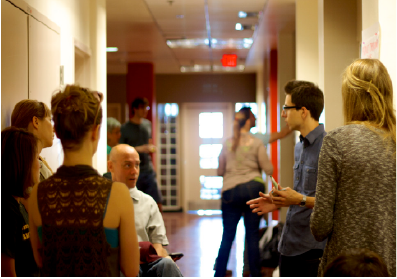
Understanding Contexts of Use
User Interviews: Interviewed members of the Phoenix community who used power wheelchairs in their daily lives including individuals with conditions ranging from cerebral palsy, quadriplegia and degenerative muscular or brittle bone diseases
Expert Interviews: Spoke with disability advocates located in the Phoenix community to discuss overarching accessibility issues in the power-wheel chair community
Immersion: The team used the power wheelchair, lent to us by Casey of CUbiC, in their everyday lives to identify the complications that arise when interacting with the built environment (sidewalks, curbs, desks, ramps, office spaces etc.)
Home Visit: The team visited the home of our advisor Casey Smitheren, a power wheel chair user himself, to better understand the context of use, his home workspace environment and journey to work
02 Synthesizing Insights
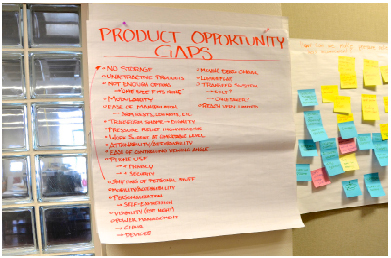
Identifying Opportunities
After the User Research phase the team workshopped to identify the product opportunity gaps in the marketplace for power wheelchair users. The following areas were identified for improvement of wheelchair design ,Mobile connectivity, Workspace, Storage space, Peripheral vision.
03 Ideation
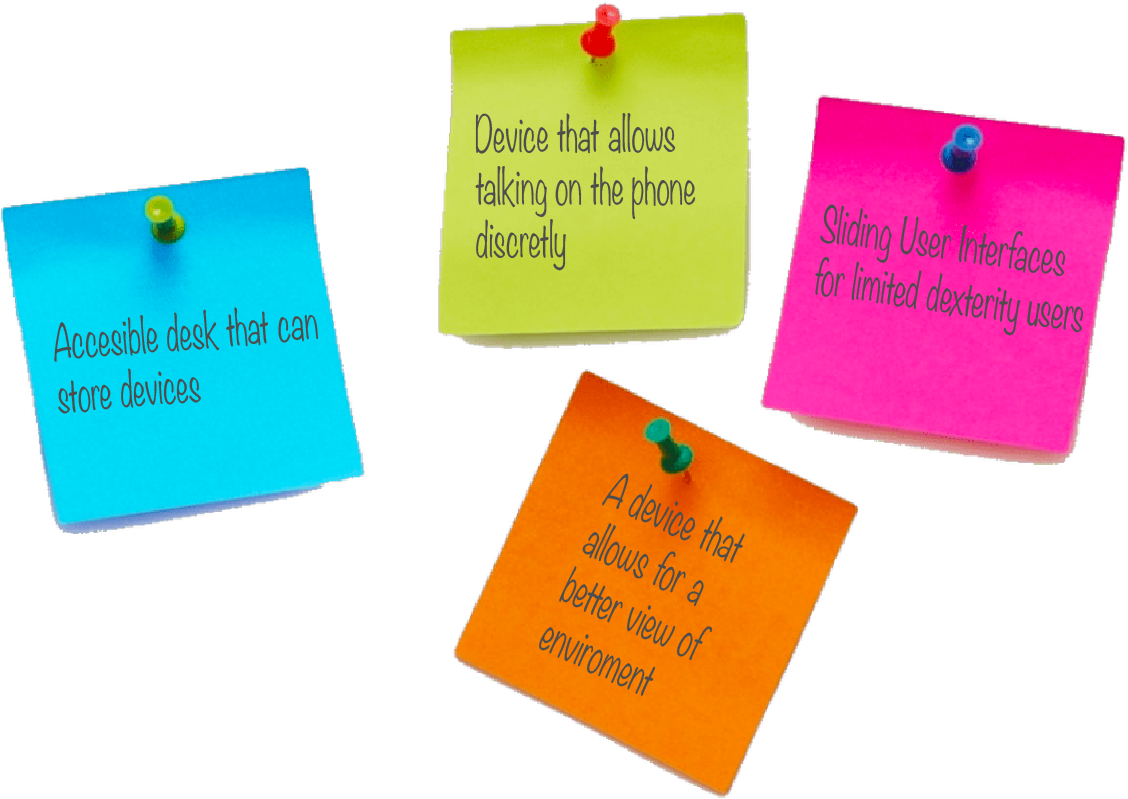
Brainstorming Session
After synthesizing insights from the User Research Phase the team brainstormed products that would fulfill the user requirements to improve the workspace, storage space, peripheral vision and mobile connectivity of the power wheelchair user.
04 Defining Functionalities
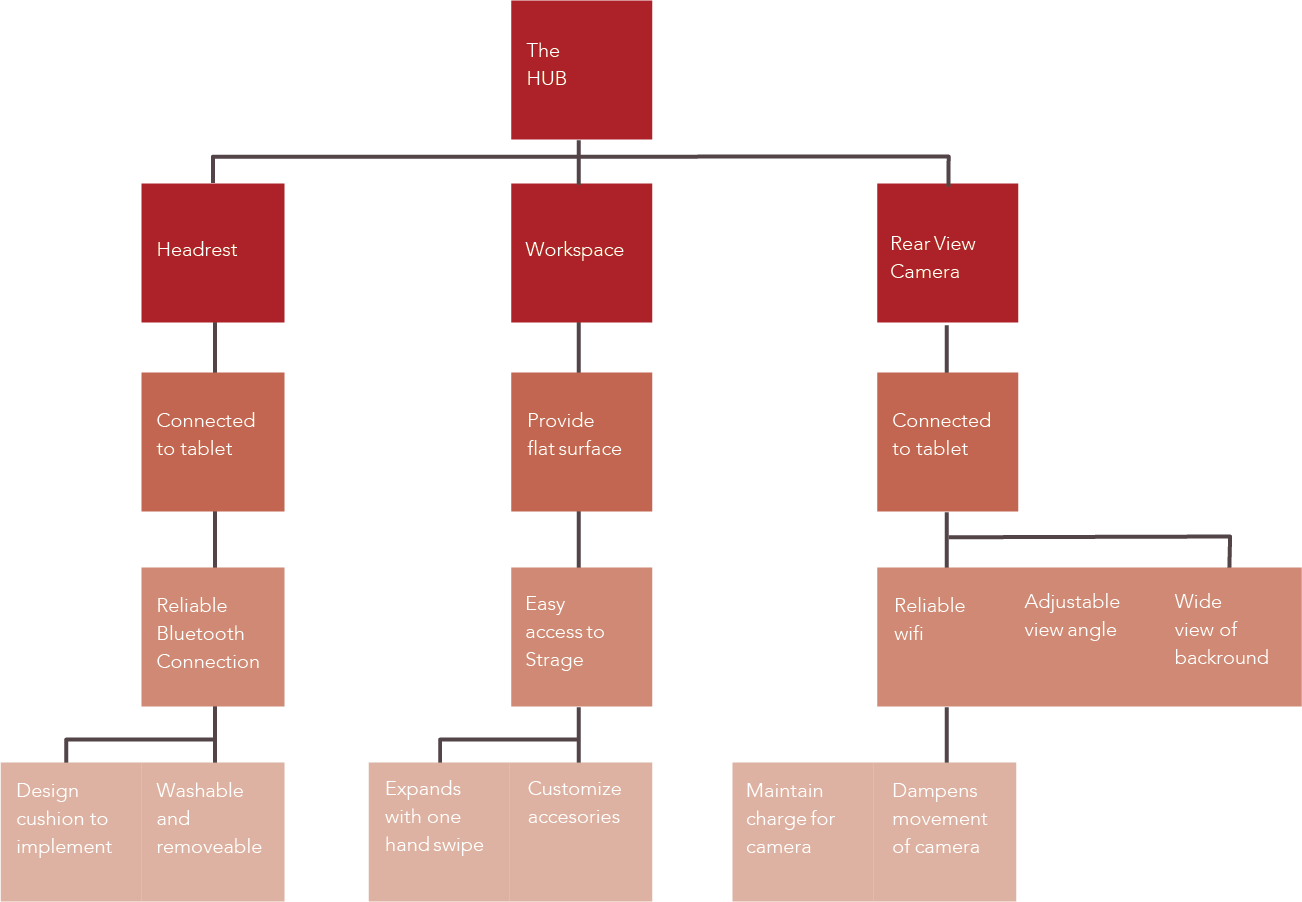
Identifying User Requirements
From the brainstorming ideation phase we broke down our solution into three distinct areas. The first was the Headrest, which for greater connectivity should have speakers inside the padding connected via bluetooth to a tablet or phone. The second was a desk that could provide both accessible storage and a workspace on the lap area and finally, the third device included a rear view camera connected to the headrest and tablet for increased peripheral vision which was stored in the workspace.
05 Implementation
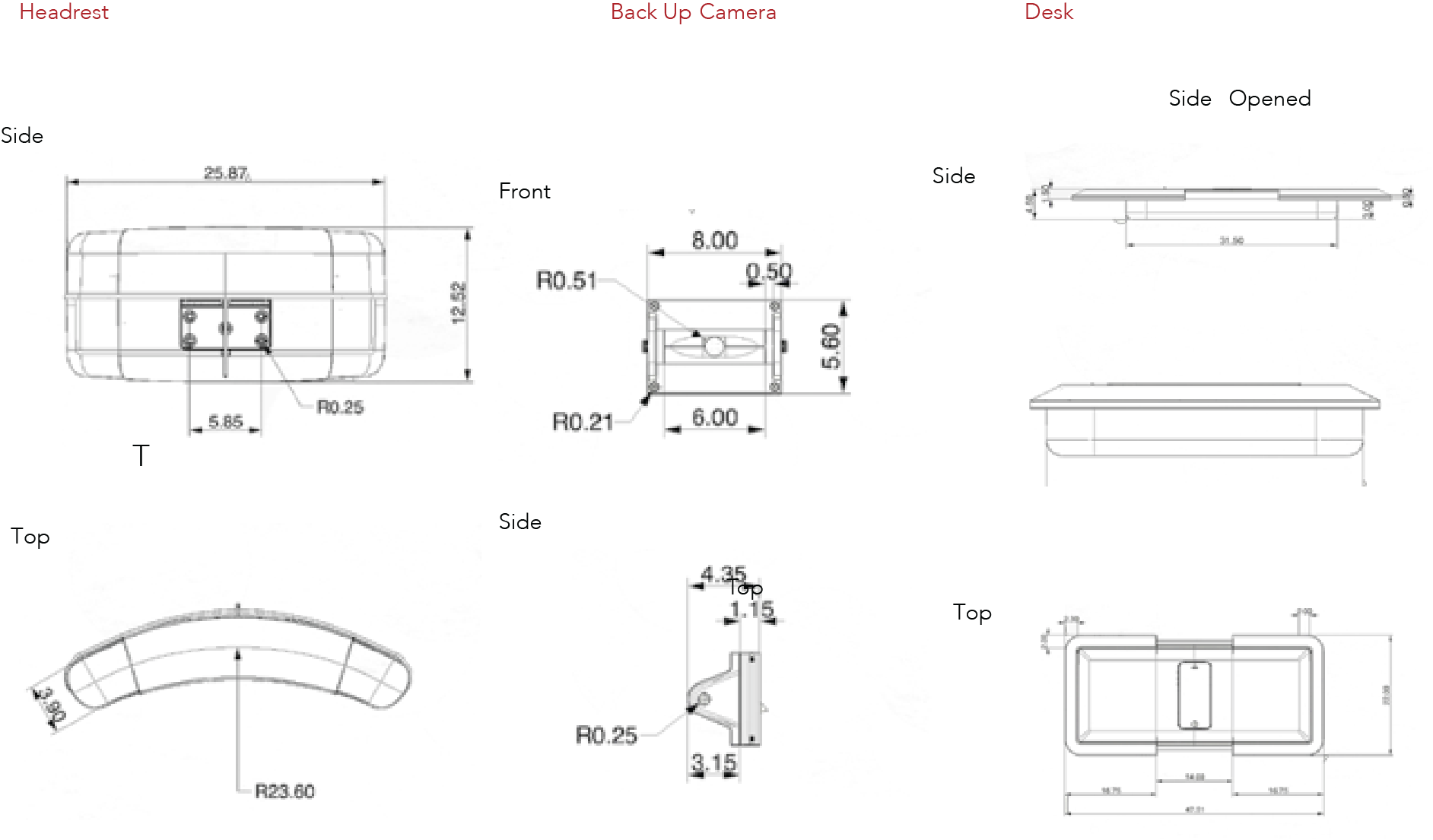
Design Requirements
Engineering requirements were created using the house of quality, product function trees, morphological charts, risk analysis, environmental product impact factors , bill of materials , technical reports and product architecture diagrams (in collaboration with Carlos who did the renderings and illustrations pictured here) then tested in the functional prototype stage.
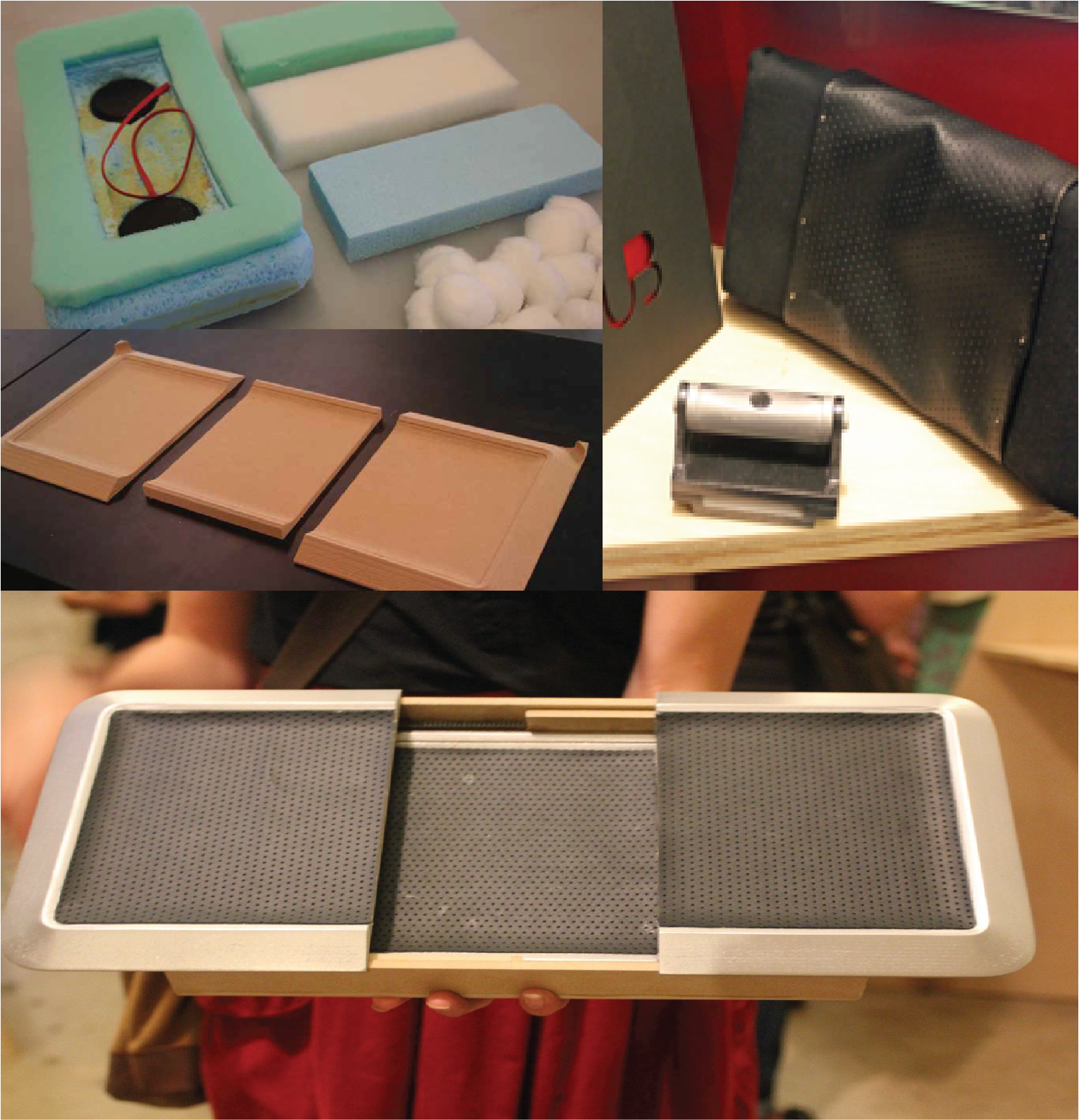
Functional Prototyping
The final functional prototype of THE HUB successfully transmitted phone calls to Bluetooth speakers in the headrest and allowed for call privacy as the phone call was only audible at less than one foot from the headrest. This successfully increased the privacy for the user while decreasing the dexterity needed to hold a phone or put in a Bluetooth headpiece
The backup camera portion was fully functional on a weighted cantilevered pivot that allowed for the viewing angle to stay constant despite the angle at which the chair was tilted back. The backup camera was feed wirelessly to an existing app for the Go Pro Hero3 on the iPad. This successfully increased the user’s visibility and when the idea was presented to wheelchair users for feedback it became known as “The Toesaver”.
Finally the desk was built with a rack and pinion gear that allowed for dual sliding panels and a lipped edge that allowed the user to open the desk using minimum dexterity with one hand. This successfully incorporated a storage element for electronic devices and a workspace for the user.
All functional prototypes were created with a collaborative effort between the Engineering and Industrial Design Students in the team.
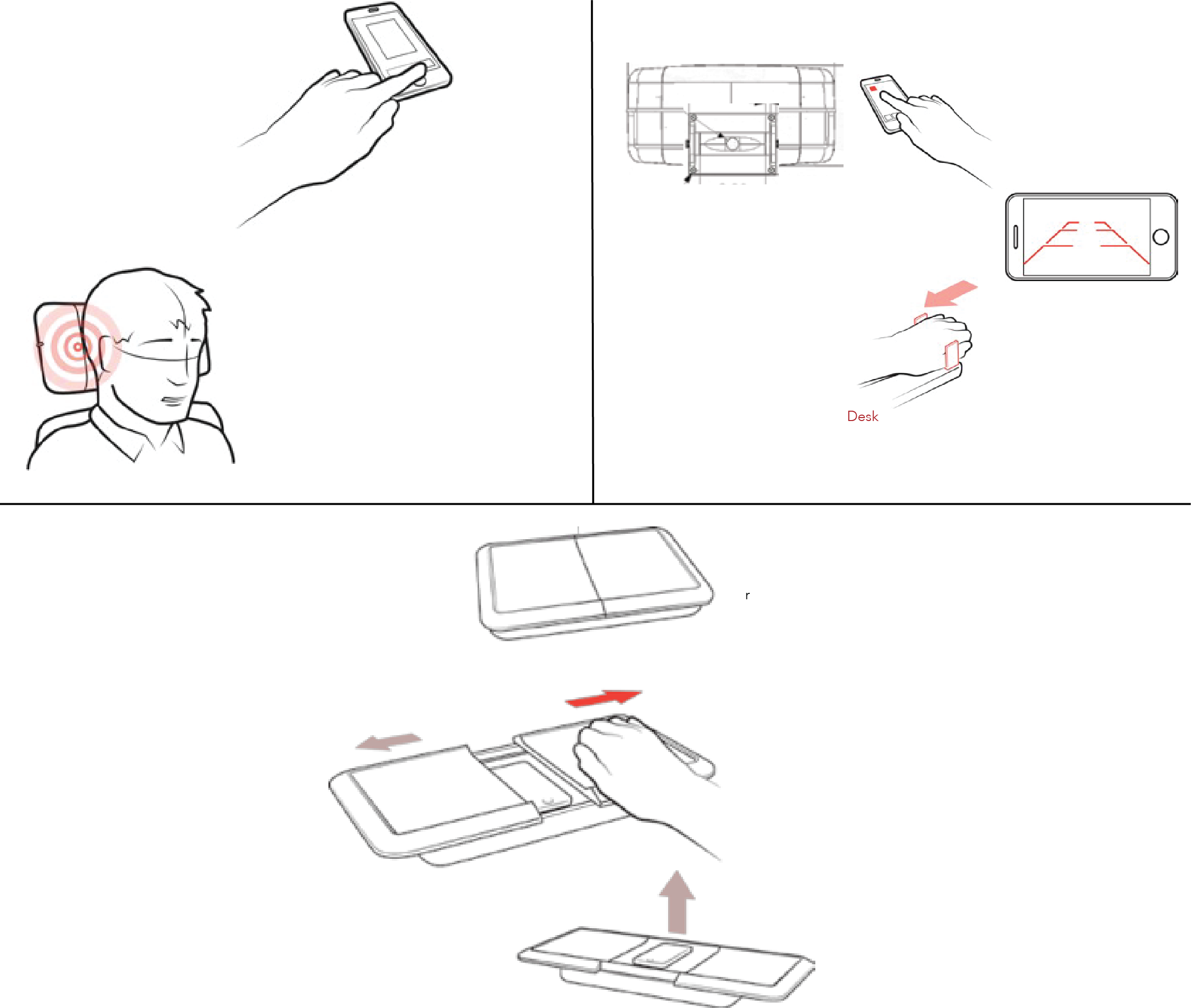
Final Proposal
The product was presented to the research group CUbiC and the PVA as well as to the local Disability Empowerment Center to power wheelchair users for feedback. The product named, THE HUB, consisted of a system of products (headrest, backup camera and desk) that aim to increase productivity, connectivity and visibility of the power wheelchair user for the interconnected world.
Reflection
The Innovation Space Capstone program acted as my introduction into collaborative design and development. I learned from this yearlong process not only the skills involved in developing and pitching a product proposal to stakeholders but also the responsibilities and skill sets of the different disciplines. Innovation Space was also my first introduction to a form of human centered design and introduced me to the field of user research and product development methodologies. My experience in Innovation Space and working with the Center for Cognitive Ubiquitous computing inspired me to apply the following year for the Whitaker International Program with a focus in designing ubiquitous technologies in the form of wearable interfaces for improving human health and accessibility to the built environment for a range of abilities.
Read more about the project and program in the link below:

